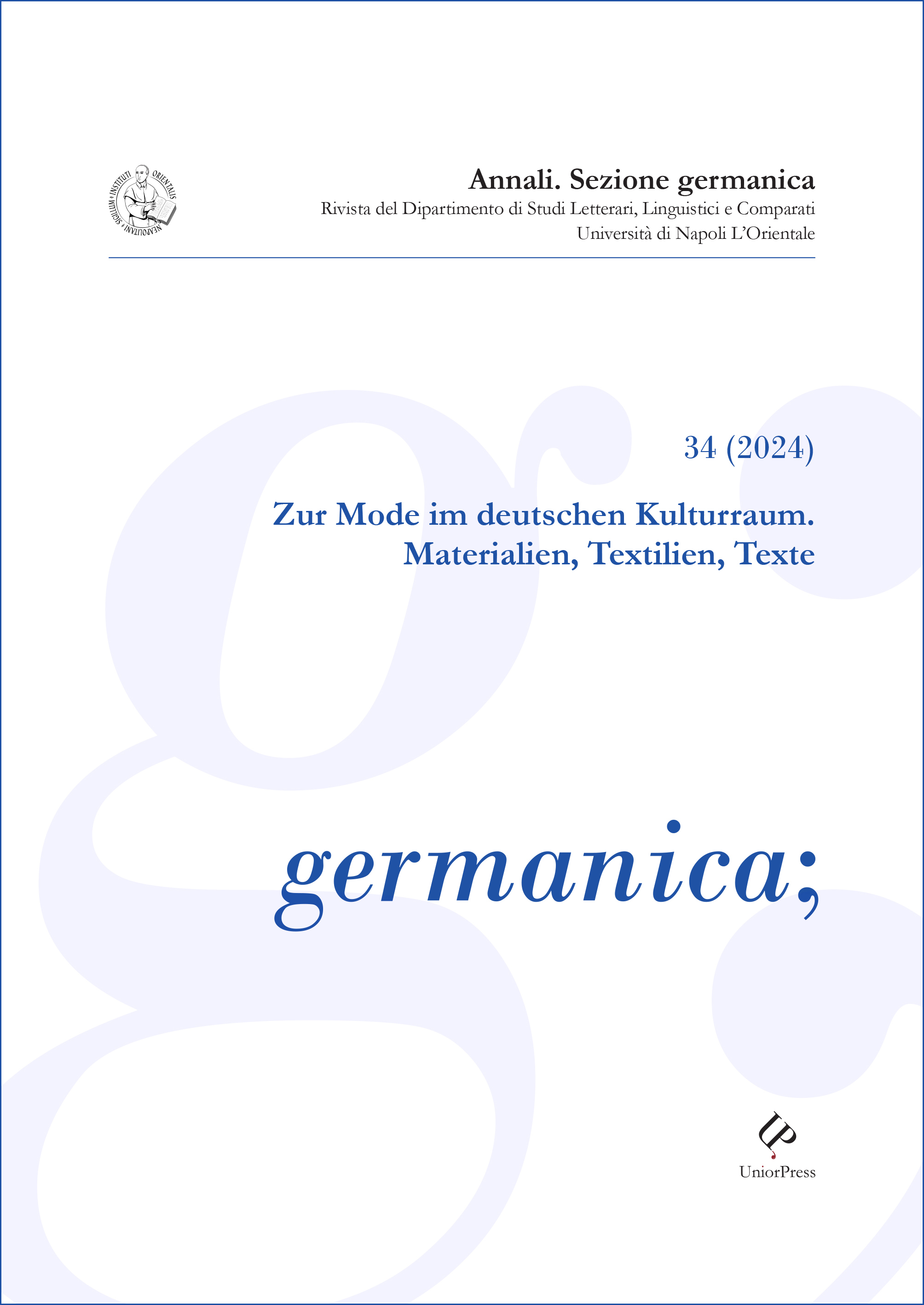Eleganz und Revolution. Das Wechselspiel zwischen technischen Neuerungen und Strumpfmode im Deutschland des 20. Jahrhunderts
Keywords:
hosiery fashion, hosiery industry, stockings, tights, materiality of fashionAbstract
Stockings often receive attention from research only at a late stage when examining the materiality of fashion. However, the study of these objects presents various avenues for exploration: the material and technical processing define the product as such, while consumption aspects refer to advertising promises and the use of stockings in fashion (and everyday wear). The interplay of technical and fashion-historical aspects renders stockings a compelling subject for clothing research. The State Textile and Industrial Museum in Augsburg houses an extensive collection from the legacy of the German fine hosiery industry of the 20th century. This object-focused investigation presents historical stocking artifacts from various decades, exemplifying the development of stocking fashion and its interplay with clothing trends. The starting point is the specific material and the technical production of the stockings, along with their implications for the appearance and marketing of the product. Key objects of the study include a natural silk stocking and a synthetic silk stocking from the early decades of the 20th century, a heavily repaired stocking from the 1940s, one of the first nylon stockings from the experimental production of the Elbeo company, a pair of stockings made from Chinchilla fabric, and a luxury pantyhose by Yves Saint Laurent.
Downloads
Published
How to Cite
Issue
Section
License
Copyright (c) 2025 Michaela Breil

This work is licensed under a Creative Commons Attribution 4.0 International License.
The authors who publish in this Journal accept the following conditions:
- The authors retain the rights to their work and give the magazine the right to first publish the work, simultaneously licensed under a Creative Commons License - Attribution which allows others to share the work indicating the intellectual authorship and the first publication in this magazine.
- Authors may adhere to other non-exclusive license agreements for the distribution of the version of the published work (eg deposit it in an institutional archive or publish it in a monograph), provided that the first publication took place in this magazine.
- Authors can disseminate their work online (e.g. in institutional repositories or on their website) before and during the submission process, as it can lead to productive exchanges and increase citations of the published work (See The Effect of Open Access).


